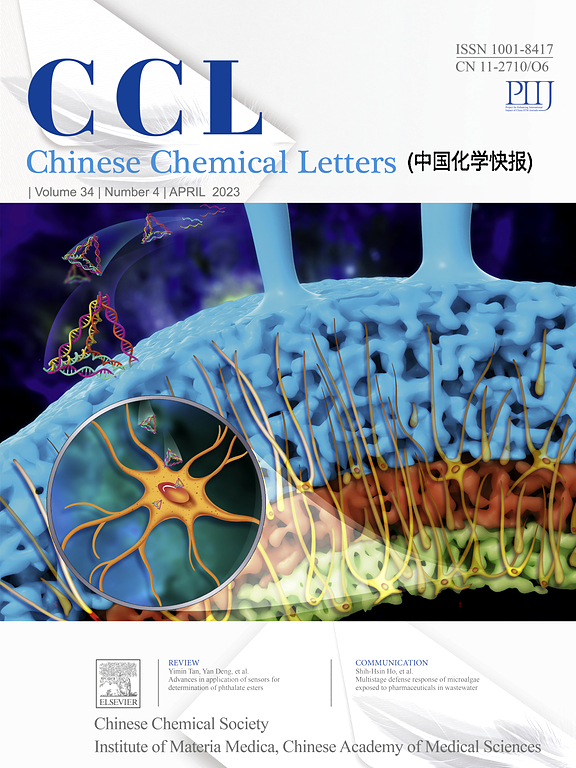Modulation of the structures and properties of iron-carbon composites by different small molecular carbon sources for Fenton-like reactions
IF 8.9
1区 化学
Q1 CHEMISTRY, MULTIDISCIPLINARY
引用次数: 0
Abstract
In this study, different types of small molecular carbon sources such as melamine, dicyandiamine, pyrocatechol, and o-phenylenediamine were used to regulate the surface structures of iron/nitrogen/carbon-based composites (Fe-N/C), which were used to activate peroxymonosulfate (PMS). The relationship between different small molecular carbon sources and the electronic structure was investigated. The characteristics of metal-carrier interaction in the Fe-N/C were clarified. As a result, there were significant differences in the degradation efficiency of catalysts prepared with different small molecular carbon sources, which was related to the types of active sites. Density functional theory (DFT) and experiments results showed that the catalyst rich in C![]() O-C and FeNx exhibited better catalytic activity, which may be attributed to the higher adsorption energy for PMS. The main active species for catalytic degradation of ofloxacin were identified as sulfate radical (SO4•-) and hydroxyl radical (•OH) by electron paramagnetic resonance (EPR) spectra. The introduction of different small molecular carbon sources can significantly affect the distribution and electronic structure of active sites on the catalyst surface, thereby regulating the generation and migration of radicals.
O-C and FeNx exhibited better catalytic activity, which may be attributed to the higher adsorption energy for PMS. The main active species for catalytic degradation of ofloxacin were identified as sulfate radical (SO4•-) and hydroxyl radical (•OH) by electron paramagnetic resonance (EPR) spectra. The introduction of different small molecular carbon sources can significantly affect the distribution and electronic structure of active sites on the catalyst surface, thereby regulating the generation and migration of radicals.

不同小分子碳源对类芬顿反应中铁碳复合材料结构和性能的调节
本研究利用三聚氰胺、双氰胺、邻苯二胺、邻苯二胺等不同类型的小分子碳源调控铁/氮/碳基复合材料(Fe-N/C)的表面结构,并利用Fe-N/C活化过氧单硫酸盐(PMS)。研究了不同小分子碳源与电子结构的关系。澄清了Fe-N/C中金属-载流子相互作用的特征。因此,不同小分子碳源制备的催化剂的降解效率存在显著差异,这与活性位点的类型有关。密度泛函理论(DFT)和实验结果表明,富含CO-C和FeNx的催化剂具有较好的催化活性,这可能是由于其对PMS具有较高的吸附能。通过电子顺磁共振(EPR)谱分析,确定了催化降解氧氟沙星的主要活性物质为硫酸盐自由基(SO4•-)和羟基自由基(•OH)。不同小分子碳源的引入可以显著影响催化剂表面活性位点的分布和电子结构,从而调节自由基的产生和迁移。
本文章由计算机程序翻译,如有差异,请以英文原文为准。
求助全文
约1分钟内获得全文
求助全文
来源期刊

Chinese Chemical Letters
化学-化学综合
CiteScore
14.10
自引率
15.40%
发文量
8969
审稿时长
1.6 months
期刊介绍:
Chinese Chemical Letters (CCL) (ISSN 1001-8417) was founded in July 1990. The journal publishes preliminary accounts in the whole field of chemistry, including inorganic chemistry, organic chemistry, analytical chemistry, physical chemistry, polymer chemistry, applied chemistry, etc.Chinese Chemical Letters does not accept articles previously published or scheduled to be published. To verify originality, your article may be checked by the originality detection service CrossCheck.
 求助内容:
求助内容: 应助结果提醒方式:
应助结果提醒方式:


